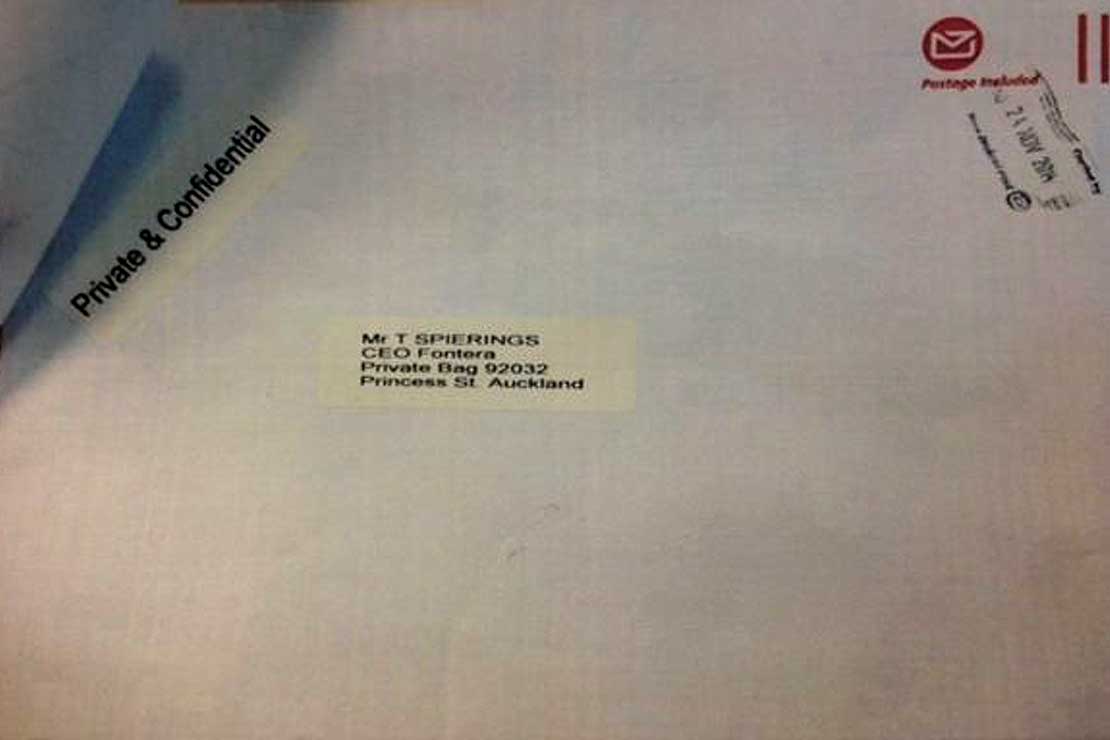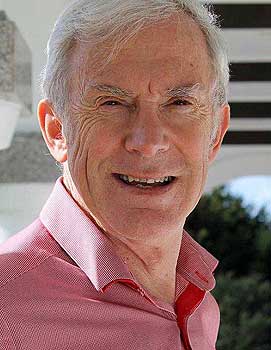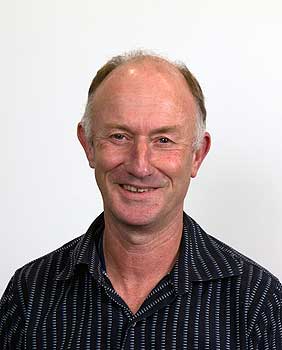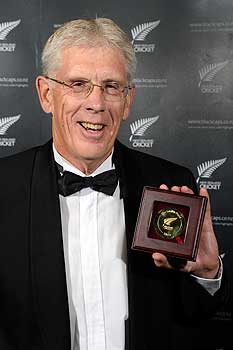MIL OSI –
Source: Auckland University of Technology (AUT) – Press Release/Statement:
Headline: Women’s rights then and now – are we falling behind?
09 Mar, 2015
New Zealand was the first country to give women the vote and we have always regarded ourselves as a leader in giving equal rights to women. To mark International Women’s Day, AUT’s Professor Marilyn Waring recently spoke at Parliament, comparing women rights in the 1970s to now and asking whether we are falling behind.
This is an edited version of the speech by Professor Marilyn Waring
Sunday 8th March was International Women’s Day. Forty years ago on March 24 1975 I became the candidate for the safe National seat of Raglan.
Media made much of my being a feminist and in 1975 that could be fairly complicated. The word feminist usually came with adjectives attached: liberal, socialist, Marxist, Leninist, Trotskyist, lesbian, separatist, radical. I didn’t wear any of those labels, being content to agree with suffragist Rebecca West who said, ‘People call me a feminist whenever I express sentiments that differentiate me from a doormat’.
Following the 1975 election Whetu Tirakatene Sullivan, Mary Batchelor, Colleen Dewe and myself were four of 87 MPs in Parliament. Soon after the election Colleen Dewe advised me she wasn’t a feminist and hadn’t ever suffered discrimination. Colleen was an accountant. ‘Have you ever gone to the Annual Conference of the Accountants in New Zealand?’ I asked. Well yes she had. ‘And were you always able to attend the dinner held at that conference?’ I continued. She smiled. They were men-only dinners. I don’t believe Colleen ever said she wasn’t a feminist again.
We had a male Cabinet of 19, one of whom was the spokesman on women’s issues, and five male parliamentary under-secretaries. All heads of government departments were men. Thirty-one men and eight women members of the Parliamentary Press Gallery fed their views from central government to 37 major metropolitan and provincial daily newspapers, all edited by men. The law courts were presided over by 23 male judges and only three of the 26 major city councils by women mayors.
The Select Committee on Women’s Rights established in 1973 reported in 1975. There were some very big silences: no health Terms of Reference because that would mean dealing with all the things that distinguish women from men; pre and post natal issues, lactation issues, fertility, but mostly they did not want to deal with women’s reproductive freedom. Not much has changed.
No provision was made for in-camera submissions, and nothing in the report made to the House was on violence against women.
Yes some of the items in the Select Committee report on The Role of Women in Society did get attention. When a married woman applied in her own name to purchase land offered for disposal by the Crown, she was required to supply a male guarantor, unless the purchase was a cash sale.
Grounds for divorce contained in the Matrimonial Proceedings Act 1963 included the option for a man to present a divorce petition against his wife for the habitual neglect of domestic duties. The latest data sets available to the Committee came from the 1971 Census.
There were the International Conventions which New Zealand had ratified and refused to denounce until the five yearly opportunity came to do this. Work restrictions were contained in the Factories Act 1946 in accordance with Convention No. 89, the International Labour Organisation Night Work (Women) (Revised) 1948. I remember comments from Margaret Wilson on the prohibition on women in night work, to the effect that if you were a nurse or a prostitute it was fine, it was just all the other work that was the problem. The prohibition had been introduced in 1919, as part of a package to ensure male preference for all work following World War 1.
The Public Service Regulations of 1964 gave direction to the State Services Commission in determining expenses on transfer to make specific rules regarding persons who were not breadwinners. The relevant ruling allowed for the department to meet the cost of “the employee and his family” on transfer within the service but “transfer expenses for married female employees should be referred to the commission with details of circumstances, number and ages of children, previous and proposed occupation of husband”. It was as a result of this rule that I first met Jools Joslin, one of the most important figures in the battle for marriage equality in New Zealand. Jools was a constituent teaching near Huntly, who as a single mother was denied transfer expenses when shifting to another teaching position. She got her expenses.
Women needed a male guarantor to open an account, negotiate an overdraft, or to raise mortgage finance or credit in their own names.
The report to the House stated, ‘Most aspects of discrimination continue to be the subject of inaction (for 1975 read 2014), and the committee accepts without reservation, the need for an accelerated effort to remove all impediments to the equal participation of women in society. Two generations later, I’m still waiting for that exciting day.
In 1975 less than 5% of all apprentices in the private sector were women, and the overwhelming portion of those were hairdressers. In 2010, the latest statistics I could find, modern apprenticeships were totally dominated by Pakeha males. It’s not surprising as every time I hear a Government Minister speak of the Canterbury rebuild it is the ‘young men’ who will find work there. Some of the same people who think it is a problem to force women into veils find easier ways to make women invisible; last week every pronoun used by the Prime Minister in terms of the New Zealanders he wishes to send to Iraq was male.
The Committee noted the use of sex to sell plant and machinery (TV coverage of events such as Big Boys Toys show nothing has changed there either) and the reference to irrelevant details of personal appearance about women who reach the news for achievements in business or political fields.
The committee recognised that there were ‘special needs’ associated with women at home. The report read, ‘We were particularly concerned at the evidence of social injustice towards full-time homemakers, for which there can be no justification other than customary practice, and which reflects detrimentally on the status of all women’. A great number of submissions stressed the relatively low economic and social value placed on a housewife’s services compared with services performed by other sections of the community.
Forty years later we have the market related outcomes of this social injustice having to be remedied by the Courts – the case for sleepover shifts at IHS homes; the Employment Court and Court of Appeal decisions in the equal pay case for rest home workers, because of the high percentage of female employees; the Employment Court Decision regarding the deliberate servitude in which 35,000 women workers in New Zealand have been systematically exploited by being paid subsidies; and the breathtaking case of the 24/7 carers who are immediate family whose human rights case was won in the Equal Opportunities Tribunal, in the High Court, in the Court of Appeal – and then the National Government decided to ignore court rulings, to take away the right to recompense and to legislate the ouster condition preventing challenges to the law, which continues the discrimination. Well, so much for the boast of believing in ‘equal opportunity and equal citizenship’ on the National Party website. But this was not surprising in a Government where a Minister could advise his agency that he did not want to read any assessment of human rights in his Cabinet Briefing papers.
Can we think of any equivalent treatment of something men did for centuries unpaid? Yes, it was called slavery. But exploiting women is apparently just fine. The 2009-2010 time-use survey found 63% of men’s work was paid, and 65% of women’s work unpaid. Women spent four hours 20 minutes every day on unpaid work, and men spent two hours and 32 minutes a day on unpaid work. The fact is the entire market economy would grind to a halt if women didn’t do the majority of unpaid work.
Recognition of this hits hard at the claim that only market work is of value, and of course redistribution of investments from government on this basis would undermine the cushy ride boys have given boys for decades.
Internationally – and based on evidence – Oxfam has called the on-going gap in paid employment rates, the vast difference on an annual basis in hours in unpaid work, the failure to address pay equity, the failure to address equal pay, the continuing gender occupational segregation, the failure to follow best practice in paid parental leave’- a fundamental entrenched form of inequality’.
With respect to the silences of the terms of reference of the 1975 select Committee report there remain outrages. It was January 28, 1988 – 26 years ago – when the Supreme Court of Canada struck down Canada’s abortion law as unconstitutional. The law was found to violate Section 7 of the Charter of Rights and Freedoms because it infringes upon a woman’s right to “life, liberty and security of person.” Chief Justice Brian Dickson wrote, “Forcing a woman, by threat of criminal sanction, to carry a fetus to term unless she meets certain criteria unrelated to her own priorities and aspirations, is a profound interference with a woman’s body and thus a violation of her security of the person.” Canada became one of a small number of countries without a law restricting abortion. Abortion is now treated like any other medical procedure and is governed by provincial and medical regulations. Check out the language of the Canadian Charter of Rights and Freedoms. Every word there is in New Zealand legislation. It remains an indictment of the cowardice of successive New Zealand parliaments and an extraordinary lack of leadership that we still have the vile outcomes of my years in parliament on the statute books. While it may be taken into account, rape is not an automatic ground for abortion. This is a reflection of a Neanderthal patriarchy.
The other major 1975 silence was violence against women. Violence against women clearly demands sustained, resourced, dedicated, urgent and ongoing action from the government. As the Covenant for the Elimination of Discrimination against Women (CEDAW) coalition of New Zealand NGOs submitted, women are frustrated and exhausted by delays, prevarication, reports and other processes that are not implemented and lack of funding to address a systemic and continuing violation of human rights of women. What are they afraid of – that men who assault women won’t then pay to come to the Cabinet Club fundraisers?
It’s time for a new Select Committee Inquiry. Maybe it could spark patriarchal interest if every issue was subject to a market-based opportunity cost assessment – just what does male violence cost the economy each year? Inequality is expensive; social injustice is not a saving, we have to pay for in the long run. The Commission on the Status of Women moving to a two year as opposed to an annual event; it’s apparently too much of a burden on nation states to have to assess the situation regarding female human rights annually.
Forty years of feminist activism and there are issues with no progress at all; violence against women, the recognition of unpaid work (where we are going backwards), numbers of women in parliament, numbers of women appointed to government boards and commissions and a systemic failure to provide leadership on all human rights issues. It’s an interesting day when I can conclude, from evidence, that there were greater and more female human rights legislative changes and changes in resourcing under Muldoon than there have ever been under Key. Two generations later a parliament still dominated by white middle-class, middle-aged men needs to hear the truths of the ongoing exploitation of and discrimination against the women of New Zealand.
So on International Women’s Day in 2015 I have a message for the Prime Minister: Get some guts and join the right side – but this time in your own back yard. I bet you can’t.
–
]]>
 NSA Worldwide SIGINT Platform 2013. Photo: NSA via Wikimeida Commons.[/caption]
NSA Worldwide SIGINT Platform 2013. Photo: NSA via Wikimeida Commons.[/caption]



 Dr Chris Galloway.[/caption]
“You can understand way the authorities didn’t release the information immediately, but after a short period to check out their veracity, I think most parents would have preferred to find out as soon as possible,” Dr Galloway says.“Most people operate on a belief they have the right to know and they want to be able to make a decision about whether to stop using a product or not, even when the risk is minimal.”
Dr Galloway says the message that the risk was low and the police were doing everything possible to monitor the threat and apprehend the blackmailer would have done more to establish trust with the public if communicated earlier.
“Announcing the threat four months after the fact puts them in a weaker position,” he says.
Dr Galloway says the agrifood sector is so critical to New Zealand’s economic success that more coordinated crisis communication plans are needed.
[caption id="" align="alignleft" width="196"]
Dr Chris Galloway.[/caption]
“You can understand way the authorities didn’t release the information immediately, but after a short period to check out their veracity, I think most parents would have preferred to find out as soon as possible,” Dr Galloway says.“Most people operate on a belief they have the right to know and they want to be able to make a decision about whether to stop using a product or not, even when the risk is minimal.”
Dr Galloway says the message that the risk was low and the police were doing everything possible to monitor the threat and apprehend the blackmailer would have done more to establish trust with the public if communicated earlier.
“Announcing the threat four months after the fact puts them in a weaker position,” he says.
Dr Galloway says the agrifood sector is so critical to New Zealand’s economic success that more coordinated crisis communication plans are needed.
[caption id="" align="alignleft" width="196"] Professor Steve Flint.[/caption]
“Key stakeholders need to have a co-ordinating action team to so they can move quickly in cases like this to minimise damage to consumer confidence.”
Meanwhile, Massey University food safety specialist Professor Steve Flint says unless the alleged blackmailer threatening to contaminate infant milk formula with 1080 works at a dairy company, it would be extremely difficult for them to access the product.
Professor Flint, from the Institute of Food Science and Technology, says that other means of contamination open to the blackmailer were also limited.
“Supermarkets also have tamper-proof packaging it’s unlikely they’d be able to access it that way either.”
Professor Flint says as with any threat “you can never be completely assured of safety.” However, the chance of this threat happening in New Zealand is extremely low.
Professor Steve Flint.[/caption]
“Key stakeholders need to have a co-ordinating action team to so they can move quickly in cases like this to minimise damage to consumer confidence.”
Meanwhile, Massey University food safety specialist Professor Steve Flint says unless the alleged blackmailer threatening to contaminate infant milk formula with 1080 works at a dairy company, it would be extremely difficult for them to access the product.
Professor Flint, from the Institute of Food Science and Technology, says that other means of contamination open to the blackmailer were also limited.
“Supermarkets also have tamper-proof packaging it’s unlikely they’d be able to access it that way either.”
Professor Flint says as with any threat “you can never be completely assured of safety.” However, the chance of this threat happening in New Zealand is extremely low.
 Evening Report editor, Selwyn Manning.[/caption]From The Editor’s Desk.
Coming up tonight on Evening Report at 8pm:
Lead Report: We have a full transcript of the extended interview with Nicky Hager on the Snowden Revelations.
Response-Reports: We have two reports framing the Nicky Hager interview by rookie journalist Alistar Kata. She’s an absolute professional and a journalist to watch in the future (Audio report) + (News Report).
Evening Report editor, Selwyn Manning.[/caption]From The Editor’s Desk.
Coming up tonight on Evening Report at 8pm:
Lead Report: We have a full transcript of the extended interview with Nicky Hager on the Snowden Revelations.
Response-Reports: We have two reports framing the Nicky Hager interview by rookie journalist Alistar Kata. She’s an absolute professional and a journalist to watch in the future (Audio report) + (News Report).
![[image] Suvi Nenonen. [image] Suvi Nenonen.](assets/MSI/Images/_resampled/ResizedImage236275-Suvi.jpg) Suvi Nenonen is Associate Professor at University of Auckland Business School and Associate Professor at Hanken School of Economics in Finland. Her research interests are in markets, market shaping strategies, business model innovation and customer asset management. Prior to entering academics, she has had 10+ years of experience as a strategy consultant to major European companies in several industries such as financial services, manufacturing, healthcare, construction, utility, telecommunications, fast-moving consumer goods industries, and non-profit organisations. Her research has been published in journals such as European Journal of Marketing, British Journal of Management, Industrial Marketing Management, Marketing Theory, and Management Decision.
Suvi Nenonen is Associate Professor at University of Auckland Business School and Associate Professor at Hanken School of Economics in Finland. Her research interests are in markets, market shaping strategies, business model innovation and customer asset management. Prior to entering academics, she has had 10+ years of experience as a strategy consultant to major European companies in several industries such as financial services, manufacturing, healthcare, construction, utility, telecommunications, fast-moving consumer goods industries, and non-profit organisations. Her research has been published in journals such as European Journal of Marketing, British Journal of Management, Industrial Marketing Management, Marketing Theory, and Management Decision.![[image] Kaj Storbacka. [image] Kaj Storbacka.](assets/MSI/Images/_resampled/ResizedImage213275-Kaj.jpg) Kaj Storbacka is Professor, Markets and Strategy at the University of Auckland Business School’s Graduate School of Management. He has previously been a Professor at the Nyenrode Business Universiteit and at Hanken School of Economics in Finland. His main research focuses on market and business model innovation, market shaping strategies and solution business transformation. Dr Storbacka has made a career out of working on the borderline between academic and applied research within marketing and strategic management. He has 30 years of background as a strategy consultant to European and global companies – in finance, media, travel, retail, utility, manufacturing and telecommunications. His academic research has been published in journals such as Journal of the Academy of Marketing Science, Industrial Marketing Management, Journal of Business & Industrial Marketing, European Journal of Marketing and Market Theory.
Kaj Storbacka is Professor, Markets and Strategy at the University of Auckland Business School’s Graduate School of Management. He has previously been a Professor at the Nyenrode Business Universiteit and at Hanken School of Economics in Finland. His main research focuses on market and business model innovation, market shaping strategies and solution business transformation. Dr Storbacka has made a career out of working on the borderline between academic and applied research within marketing and strategic management. He has 30 years of background as a strategy consultant to European and global companies – in finance, media, travel, retail, utility, manufacturing and telecommunications. His academic research has been published in journals such as Journal of the Academy of Marketing Science, Industrial Marketing Management, Journal of Business & Industrial Marketing, European Journal of Marketing and Market Theory.









 Evening Report editor, Selwyn Manning.[/caption]
Editor’s Note: Welcome to Evening Report!
I have launched
Evening Report editor, Selwyn Manning.[/caption]
Editor’s Note: Welcome to Evening Report!
I have launched 



